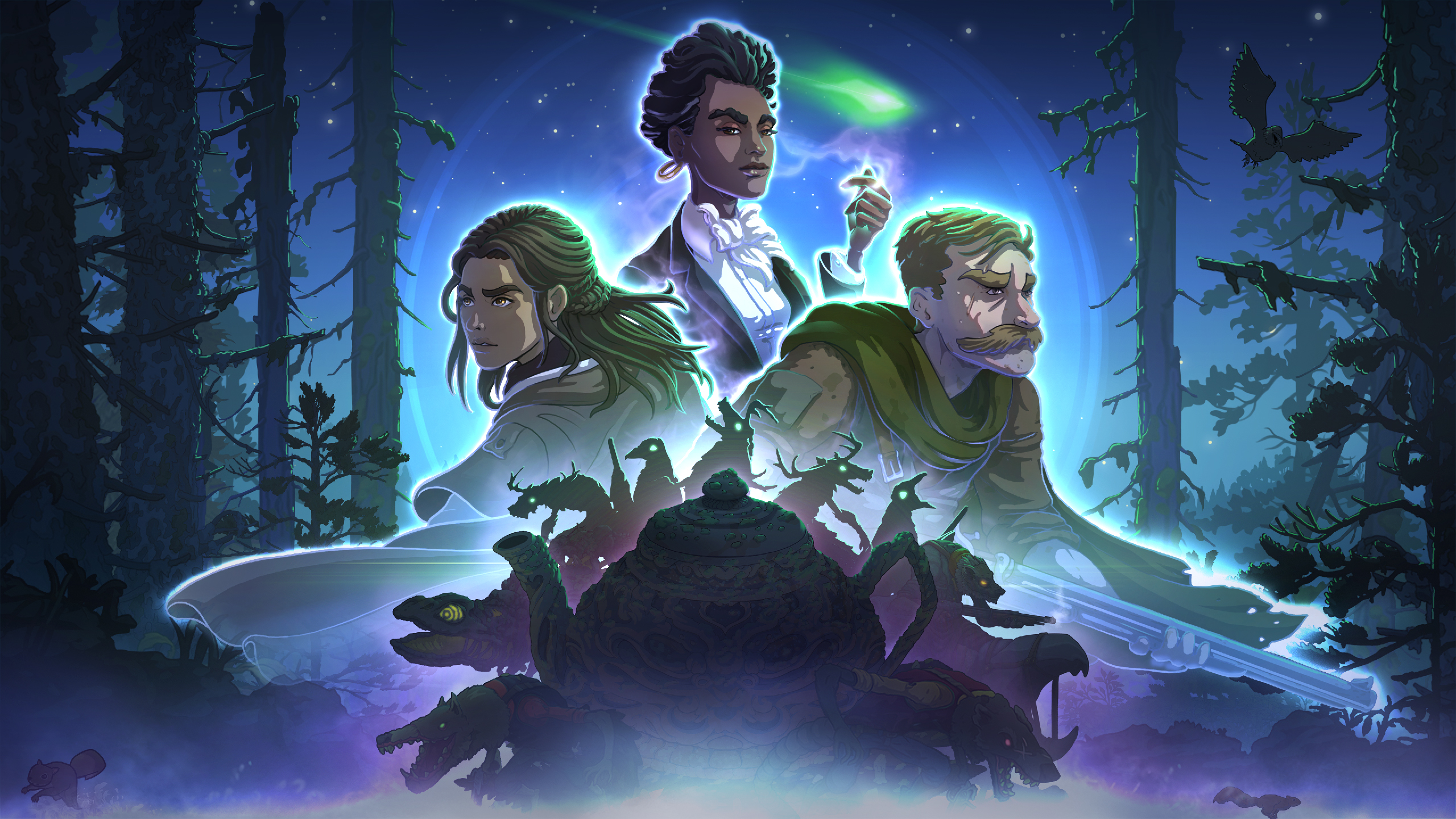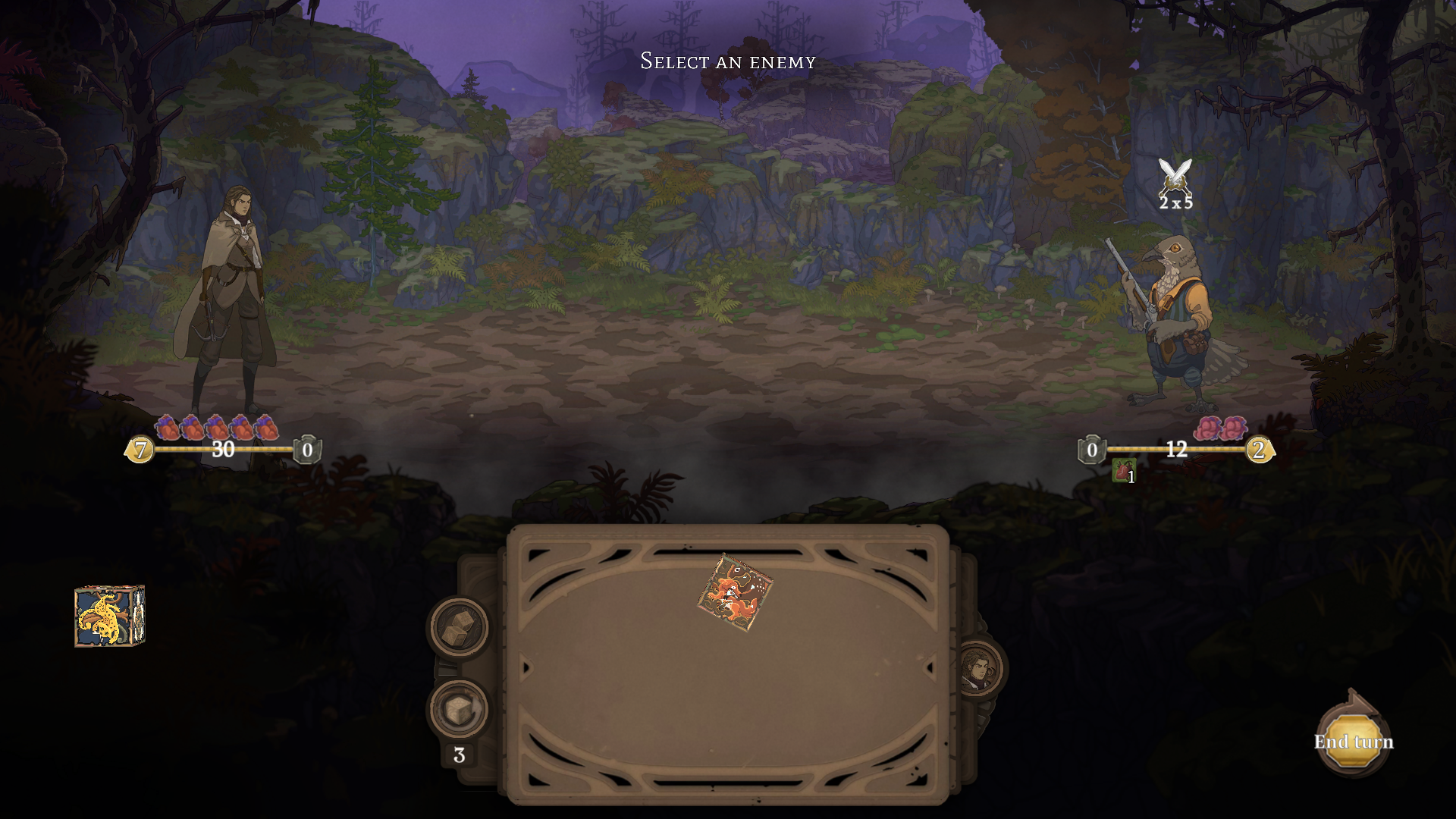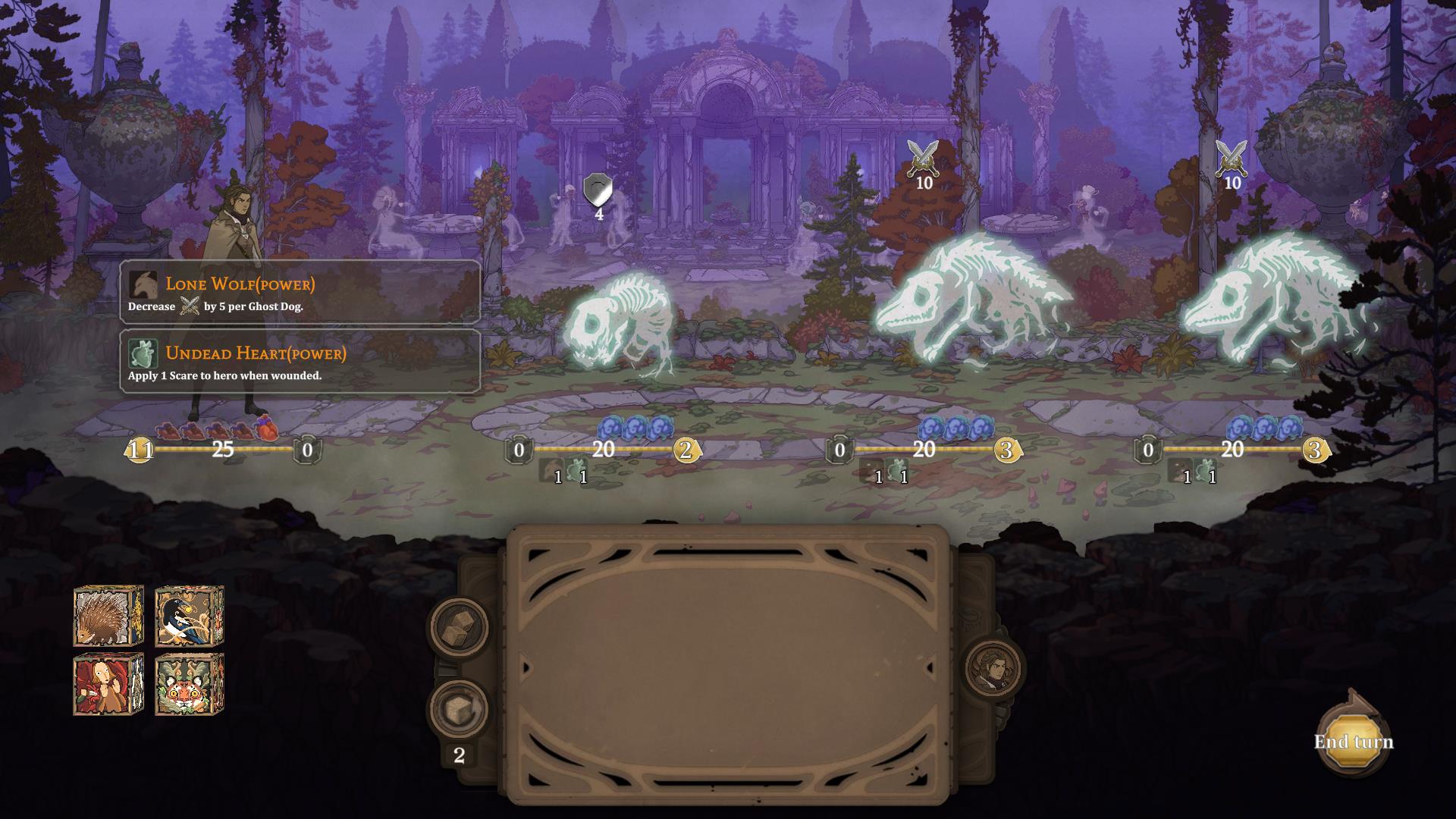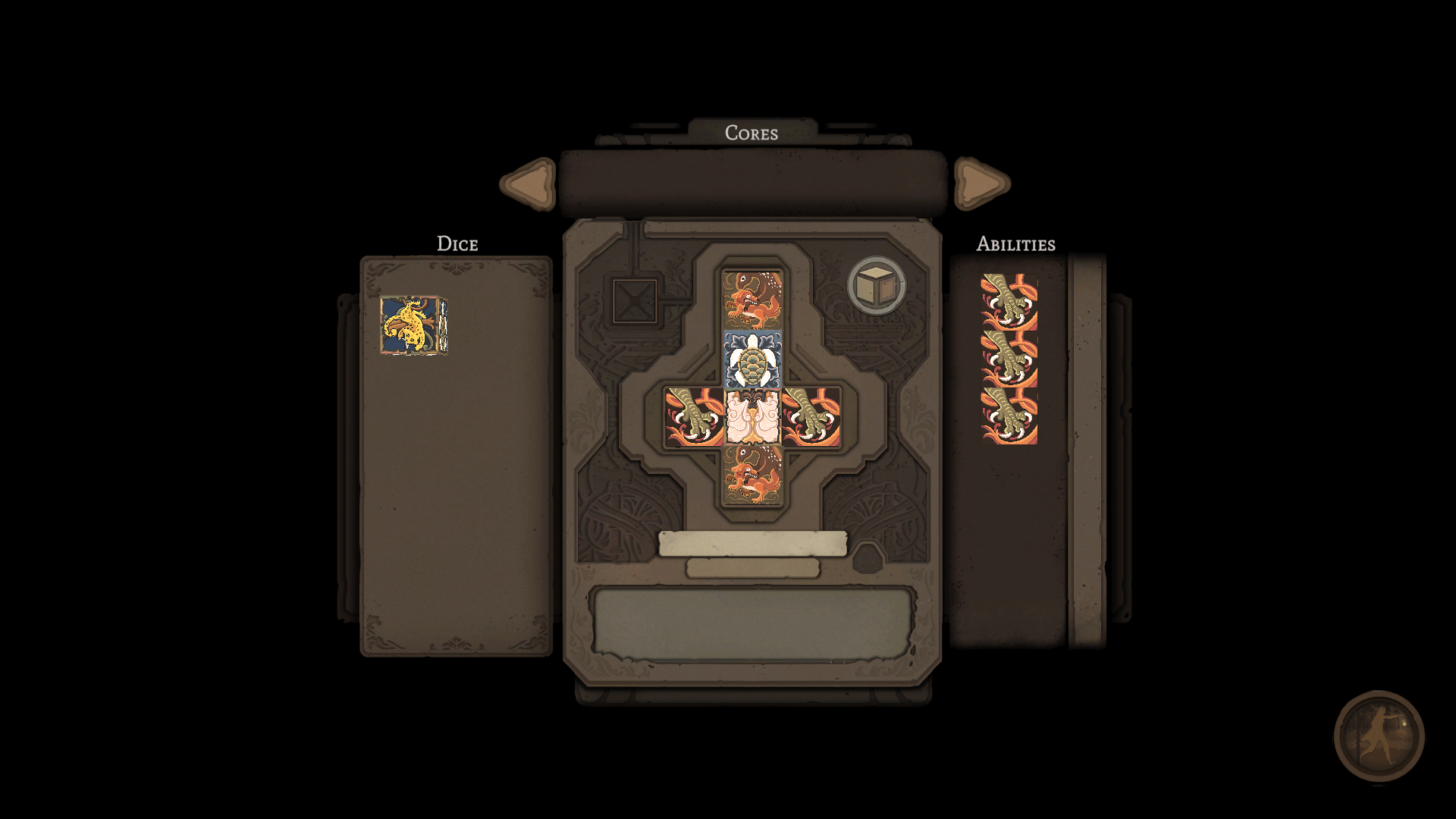Our Verdict
One flipping good idea can’t save this repetitive roguelike deckbuilder from only rolling above average.
PC Gamer's got your back
What is it? A dice-based deckbuilder about murdering heavily-armed animals.
Release date February 29, 2024
Expect to pay $13.50/£12.80
Developer Yarrow Games
Publisher Versus Evil, tinyBuild
Reviewed on Asus ROG Ally
Steam Deck TBA
Link Official site
We’re living in a golden age of roguelike deckbuilders. If you like using cards to deal out death, there are loads of great games I can heartily recommend. Tamarak Trail attempts to stand out from the overcrowded pack by ditching the pack entirely, tearing up the cards and opting for dice instead. A Slay the Die-r if you will (of course you won’t, I’m so sorry). It actually makes a pretty good case for a dicey deckbuilder, though it’s sadly hamstrung by a campaign that could’ve used a reroll or two.
Armed with a pair of deadly dice, you set out on the titular trail, which is one hostile nature walk. Almost every move you make results in a fight with a monstrous animal armed with a gun. Good thing that each face of your dice has a different power to help you fight this NRA wet dream.
Combat is turn-based, with your starter dice rolling either a basic attack, some defence, a nasty bleed effect that does persistent damage, and one that lets you evade an attack. That last power also ‘flips’ the die, letting you use whatever power was on the opposite side, too. Powers often drain from a pool of stamina, which also doubles as your last line of defence. A small amount of stamina regenerates each turn and that amount increases a little for every dice you don’t use, so there’s some tactics involved in knowing when to hold back. You can see what your opponent is going to do on their turn, so if they’re planning on shooting you, maybe not a bad idea to use a defence power.
It’s a fine, if unremarkable, combat system, similar to ones you’ll find in the seventeen deckbuilders that have been released on Steam since you started reading this review. What differentiates it is the dice. Some powers, like that aforementioned bleed one, only trigger if you ‘bounce’ dice by deliberately rolling them into each other. But dice you’ve bounced cost more stamina to use. There’s also a slim chance that when you bounce a die, it’ll knock it onto a different face. Maddening as this can be when it ruins a winning strategy, I do like that Tamarak Trail has leaned into how dice actually behave.
Each successful combat is rewarded with a choice of three die faces, and you can customise your dice layout however you wish. Cover one in defence faces, for example, and you’ll have a consistent shield die that’ll stop you having to rely on blind luck. But it’s when you start unlocking more faces that can flip the dice that the game really starts showing its potential. I made a die that could inflict a nasty debuff then flip to the right, onto a face that does good damage and flips again so long as the enemy is debuffed (which the previous face had already taken care of, heh heh heh).
Ah, but what if you have a dice power that flips the die one way, and the next power flips it back to the previous face? That triggers an Infinite Combo, a massively boosted attack based on the die face that was repeated. I loved discovering these. I had a die power that inflicted confusion, which lowers the enemy’s attack damage. I eventually had an Infinite Combo going that inflicted a stack of ten confusion, turning a ferocious pigeon armed with a rifle into an enemy about as threatening as an actual pigeon trying to use a rifle.
Imagine my glee when I finally managed to add a face on every side of the die that would always flip to another face, raising the chances of rolling an Infinite Combo to 100%. The game does have safeguards to stop you spamming these—dice powers become exhausted and have to be recharged at heavy stamina cost—but once I’d also built a die that could inflict a massive damage Infinite Combo, I felt like I finally had a winning duo of six-sided death cubes that could see me through my first successful run.
Keep up to date with the most important stories and the best deals, as picked by the PC Gamer team.
Trailing behind
Tamarak countered with a second act full of ghost enemies. Every time you break their defence and do some lasting damage, you get the ‘scare’ debuff. Once this stacks three times, you take damage. Scare goes down by one each turn, so suddenly all-out assaults are suicidal. Initially I enjoyed this twist and having to reroll my once-winning strategy. Until the game rewarded my success against three ghost hounds by… making me fight three more ghost hounds. Oh.
Then another three ghost hounds. And then another three. I started wondering if I was caught in a timeloop (no, I’d just gotten so bored that I was daydreaming about a better deckbuilder). Usually the fun of these games is in trying to craft the perfect deck that can survive a variety of challenges thrown at you. There’s none of that when the game is making you repeat identical battles over and over. At least on a struggling run you get the chance to rethink your strategy and course correct. But when you’re doing well, the game becomes incredibly dull, especially if you’ve successfully modded all the randomness out of your dice rolls with flip powers. You’re not always going to get four of the same fight in a row, but battles repeat often enough to make me dread another go. That’s a pretty critical problem for a roguelike.
A lodge you return to between runs has persistent upgrades like more stamina regeneration and extra gold dropped by enemies, all at costs that feel a little high. I’d recommend investing in the one that gives you currency every time you die first, followed closely by unlocking the other characters, which at least help cut down the repetition. The Magician introduces elemental powers that can stack and interact in novel ways and the Tracker introduces single-use traps. Both add welcome variety, but they’re still hamstrung by starring in that overly samey campaign.
Tamarak also isn’t great at giving out information. ‘Ice Mirror: Attackers receive two ice’ boasts one power. Swell, but would you mind telling me what the ice debuff is before I commit to adding it to my build? When you’re offered a choice of three new powers after combat, you can’t review your current deck before you pick one, because life is cruel and unfair. It’s a shame, because there’s definitely potential here. A few UI patches and some new enemy types thrown in is an Infinite Combo that would boost its score tremendously. But the idea of this in its current form becoming a Steam Deck staple, up against recent classics like Cobalt Core and Balatro? No dice.
One flipping good idea can’t save this repetitive roguelike deckbuilder from only rolling above average.





